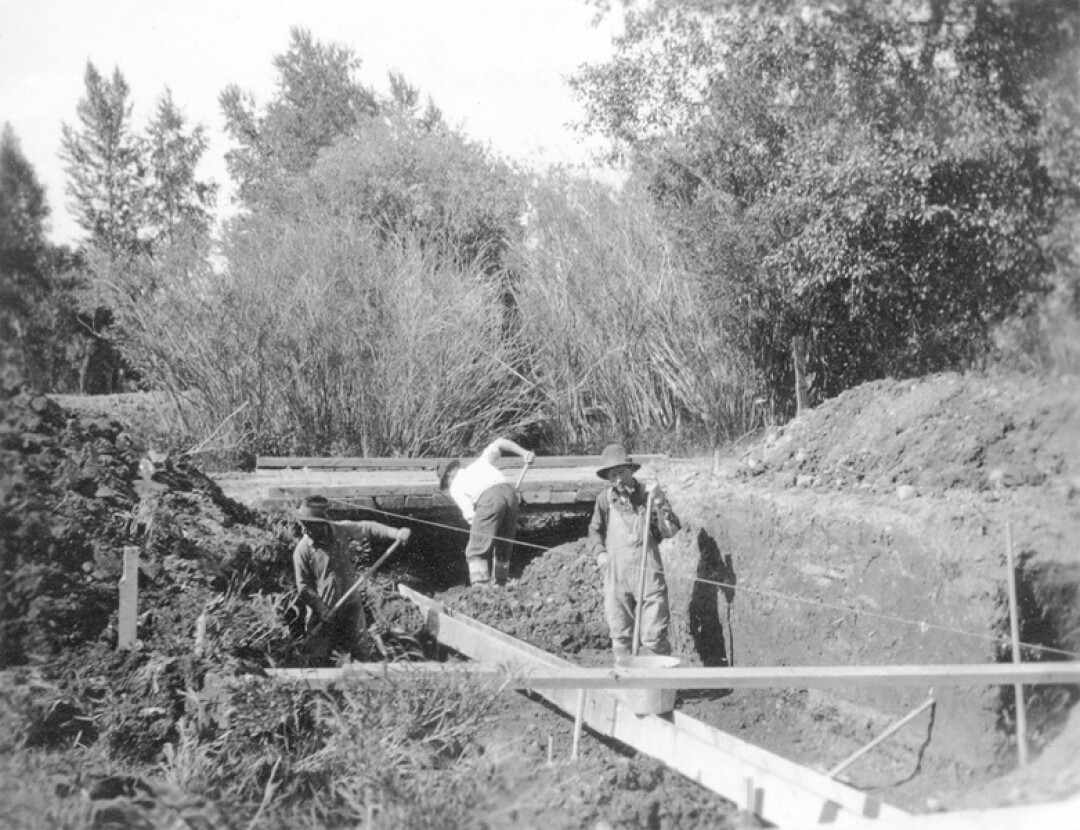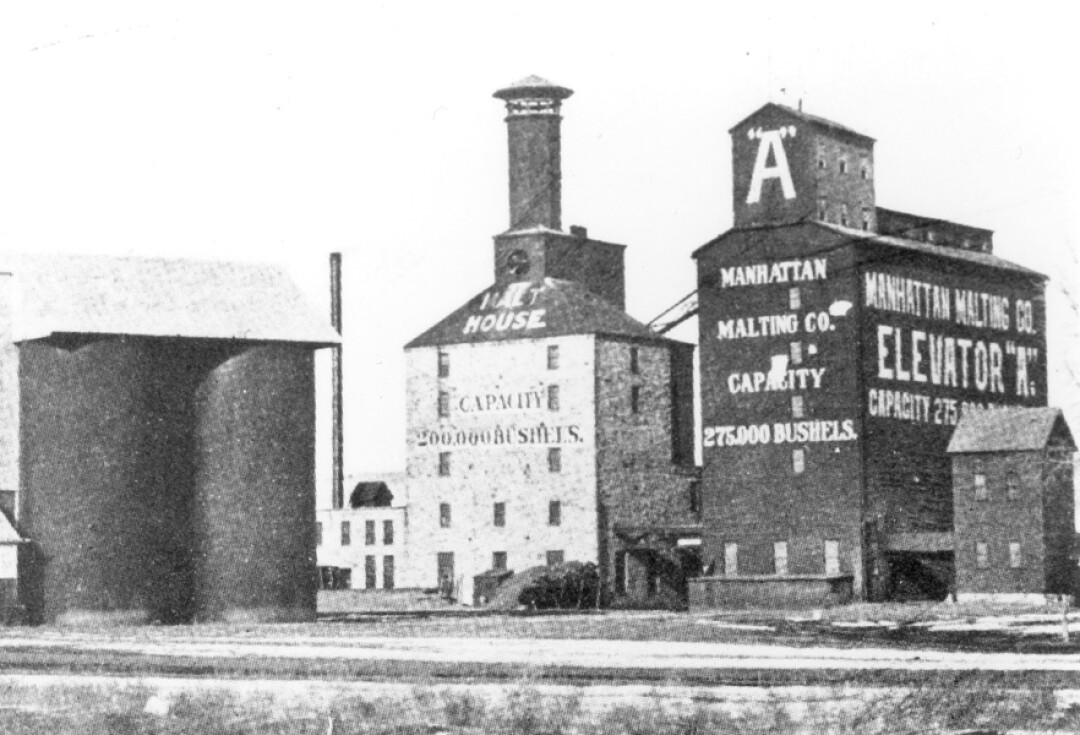Gallatin Agricultural History
Cindy Shearer | Tuesday Sep. 4th, 2018
With increasing conversations about growth and development, we should not forget our agricultural heritage, and the sustaining benefits we continue to enjoy today, including our scenic views and open spaces.
The earliest explorers remarked about the fertility of the Gallatin Valley, with its lush growth and bountiful water supply. In 1806, William Clark wrote in his journal about the challenges of traveling across the valley due to the swamps created by beaver, and later in 1864, William W. Alderson wrote, “Up one of the most beautiful and picturesque valleys the eye ever beheld, abounding in springs of clear water, flowers and grass in abundance…”
It is believed that John Bozeman conceived the idea of starting a colony of farmers in the Gallatin Valley to raise produce to supply the mining camps. By the end of 1863, 6000 miners were in Alder Gulch, and Virginia City had become a thriving community. Many of the settlers from the mining districts, disappointed in their quest for gold, began to realize the opportunity of supplying the mining camps with agricultural products and moved to the Gallatin Valley to establish farms. The first sales of wheat, potatoes, and other vegetables produced in the valley were made in the fall of 1864. The wagon trains passing through the Gallatin Valley on their way west provided another market for these crops and also for the cattle, sheep, and horses being raised by these first farmers. The demand was great and the prices high.
The first successful planting of wheat is usually credited to John Thomas. Thomas brought a bushel of wheat from Utah which produced fifty bushels in return on his farm north and east of Belgrade in 1864. Thomas did not sell this initial crop but held it until the next year and sold seed for $10 a bushel to area farmers. A year later, with 20,000 bushels of wheat being produced in the valley the need for mills to process the grains into flour created another commercial opportunity.
The first flour mill in the valley, and perhaps the first in the Montana Territory, was built by Thomas Cover and P.W. McAdow in the spring of 1865 and located on the north side of Bozeman. By 1866, there were three flour mills and three more built in the 1870s. The Gallatin Valley was territorial Montana’s breadbasket and largest grain producer, by producing 32% of the Territory’s oats, 52% of its wheat, and 26% of its barley in 1887.
Cover and McAdow brought the first threshing machine to the Gallatin area in 1865. Threshers increased productivity and increased the standard of living with log cabins giving way to frame houses.
The Penwell brothers in the Springhill area are often credited with building the first irrigation ditch. Running more than two miles north of Belgrade, it was built with plows and home-made scrapers as a community effort. Settlers in the Middle Creek area banded together in 1871 to form perhaps the first mutual effort in Montana, the Upper Middle Creek Ditch Company, to supply the area with water brought from the West Gallatin. The business of supplying water appeared to be profitable, and in 1888 Albert Kleinschmidt of Helena organized the Gallatin Canal Company to complete a ditch which the farmers had started on a mutual plan. The cost of $2.00 per inch was consider too high and the farmers organized the Excelsior Canal Company and built a competing ditch. Later, followed the West Gallatin Canal Company, and in 1891 the Manhattan Malting Company secured funds and set up the West Gallatin Irrigation Company to construct the large High Line Canal to serve the benches west of the Gallatin River.
In 1890, Henry Altenbrand and several New York businessmen were scouting for land in the valley on which to grow barley for beer production. The company, Manhattan Malting Company, purchased 13,000 acres in what was then Moreland. A large malting plant was built and the name of the town was changed to Manhattan. With a capacity of 475,000 bushels, it was the largest facility from St. Paul to Seattle.
In 1905, the Manhattan Malting Company sold its land to the Manhattan Ranching Company. The malting company continued to grow and in 1914 won the award for best malted barley by the Pabst Brewing Company in Milwaukee. The company could not, however, overcome prohibition. The plant closed early in 1915 when Idaho, Oregon, and Washington became dry states. The company was forced out of business in 1919 when Montana passed prohibition on January 1, 1919. The malt house was condemned after the earthquake of 1925. Manhattan and the Holland Settlement moved out of barley and into potato production which continues to be highly successful.
Though the Gallatin Valley’s reputation as the “Egypt of America” spread rapidly, other lesser known crops such as lettuce, strawberries and apples grew unexpectedly well in the area and gained popularity. Lettuce, according to a number of sources, was grown throughout the valley for export purposes to surrounding states.
The possibility of growing strawberries commercially was studied by Professor R.W. Fisher of the Montana Agricultural College Experimental Station in 1908. Fisher predicted “in the near future the Gallatin Valley will be known throughout the entire land by its strawberries.” Some 1,200 crates of strawberries were shipped out to Nebraska, Wyoming, and North Dakota that year.
In a 1908 article in Bozeman’s “Republican-Courier”, Editor W.J. McCulley stated there were 10,000 fruit bearing apple trees in the valley.
“The best apple for this market, is the Wealth. Other good ones are the Yellow Transparent, the Duchess of Oldenbeurg, the Okabena, the Giddeon, the Longfield and the Hibernal.” Transcendent Crabs were also a good crop, he said, that could be shipped to eastern markets at considerable profit.
From 1918 until 1951, the pea cannery operated under the name of Pict-Sweet, and in 1951 the name changed to Bozeman Canning Company. Limitations on wheat acreage made the cannery very important to local farmers. Growers were able to raise a green pea crop on lands which otherwise lie idle for the year in summer fallow.
In 1956, 1,600 acres of peas were being grown by local farmers for the cannery and many other acres were used for raising seed peas. During the 1950s, the cannery employed approximately 150 employees during the peak of the season and ran 12 to 14 hours per day. In 1955, the plant capacity was eight to ten tons of peas an hour. It was the development of a new method of preserving foods—freezing them—that brought about the closing of the Bozeman Canning Company.
Dependency on canals and many small projects led to an urgent need for a larger and more stable source of water, particularly for the late summer season. The State Water Conservation Board met this need for the time at least, by the construction of a small storage reservoir in upper Middle or Hyalite Creek. Construction began in 1939 and was completed in 1950.
While the cornerstone of the agricultural economy was in farming, the Gallatin Valley became a center for the raising of excellent livestock at an early date. Various breeds of cattle have been developed through the years, Lester H. Thompson came to the Gallatin in 1910 and built a famous herd of registered Herefords, Ernst Monforton, located near Bozeman Hot Springs also had registered Herefords. The earliest of the purebred cattle were Shorthorns, with Angus gaining popularity in the 1940s.
The largest of the beef cattle operations in the area was started by Charles Anceny. Anceny arrived in 1864 and attempted to raise horses, but the venture was not successful. Undisturbed by this early failure, he and his son acquired 120,000 acres of rangeland between the Gallatin and Madison watersheds, south of Salesville, now known as Gallatin Gateway. The ranch had up to 14,000 head of cattle and nearly 2,000 head of horses, the latter used on the Yellowstone Park stages in the summer. In 1929, the ranch was incorporated into the Flying D Ranch in partnership with Harry W. Childs and Harry L. Summers. After Charles Anceny II’s death in 1936, the ranch passed through several owners and is currently owned and operated by Ted Turner.
Concurrently, the dairy industry was gaining a foothold in the agricultural economy of the valley. A number of large and small dairies across the valley supplied area residents with fresh milk. A creamery was established at Central Park in 1905 and the Bachelder family operated a successful creamery in Three Forks for many years with small cheese factories built in Central Park and Gallatin Gateway. The largest and most successful creamery was the Gallatin Cooperative Creamery, which incorporated in 1932 with the name “Gallatin Gold” now known as Darigold.
Large numbers of sheep have been raised in the valley through the years. In the 1920s Gallatin Sheep Men formed an association to organize and promote producing locally bred sheep for wool production, stating that “the industry would bring money to the farmer in July, a time when it is needed.” Wide interest was centered in the development of the Columbia strain and the Columbia Sheep Breeders Association of America was formally organized at a regional meeting in Bozeman in January, 1942. In the 1960s, the valley produced approximately 30,000 sheep raised by 300 producers.
While the physical reminders of our Gallatin Agricultural Heritage are becoming less apparent, with diminishing agricultural lands under production and farmsteads being replaced by development, we are the community that we are largely because of their contributions.
| Tweet |
